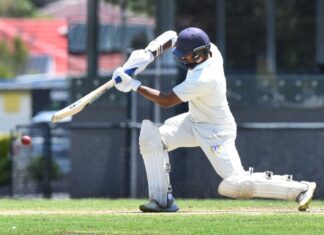By Peter Sweeney
PAKENHAM hosted the first race meeting in Australia in which decimal currency was used.
It was February 14 – better known as St Valentine’s Day – in 1966, when dollars and cents replaced pounds, shillings and pence.
Two days later it was the Pakenham Cup. The first race on the program was the Initial Dollar Improvers Handicap.
The winner was Fauvale, who was ridden by Roy Higgins and trained by Angus Armanasco.
In the photo of the race finish that Stanley Wootton, the owner of Fauvale, was presented with, was a dollar note mounted in the frame. Some time later he gave the photo back to the club.
THE first Pakenham race meeting covered on the Victorian TAB was on March 29, 1961.
The TAB had opened in Victoria 18 days earlier at the Williamstown agency.
TAB turnover on the maiden meet at Pakenham – where it was win and place betting only – was $13,065.
The first agency established in Pakenham was on May 31, 1963. The agent was Les Drayson, who later became the bookmakers supervisor for the Victoria Racing Club.
In its early days, the TAB operated manually, with regional headquarters receiving their figures at pre-arranged times from the branches and agencies. Regional bosses then telephoned central headquarters with figures for the area.
In September, 1967, computers were introduced into TAB operations.
The first computer was christened Carbine, named after the champion galloper who won the Melbourne Cup in 1890.
IT was big time at Pakenham in 1962 – even though the winner of the Cup was a horse called Small Time.
The five-year-old chestnut carried a weight record of 9st7lb, or 60.5kg in today’s language.
Why was the heavy haulage placed on Small Time?
Well, the horse won the Derrimut Welter and Carlton Handicap and was second in the Standish Handicap. And soon after the Pakenham Cup, Small Time won a sprint at Werribee carrying top weight.
It may have been Small Time on the track at Pakenham in 1962, but it was big time on the course.
For the first time, stake money for the Cup was 1000 pounds – or $2000.
COLOUR came to Pakenham on June 15, 1967, when television station ATV-0 conducted a live experiment.
It was not until March 1, 1975, that colour television became official in Victoria, but it was at Pakenham eight years earlier when cameraman Colin Mitchell, perched on a stand in the saddling enclosure, focused his coloured camera on a woman admiring some artificial flowers.
Only those on course watching the monitor screen saw a splendid reproduction of what Mitchell caught.
ON March 19, the Pakenham Agricultural and Horticultural Society will stage the 100th Pakenham Show at the Pakenham racecourse.
After that, the future location of the show is in doubt.
It was in March 1959 that the committee of the Pakenham Racing Club agreed to make the racecourse available to the PAHS, as the Pakenham Recreation Reserve had become too small for the society to “show off” its show.
PAKENHAM was the first racing club in Victoria to use the electrically operated Steriline starting stalls in 1959.
The Pakenham set was the third made by South Australian engineer Lindsay Sims, who earlier made stalls for SA clubs Murray Bridge and Balaklava.
After Pakenham promoted the stalls, their popularity mushroomed throughout Australia and even overseas.
HEAVY rain dogged Pakenham’s autumn meeting of 1931.
After the March 19 meeting was originally abandoned, and later re-scheduled for April 30, the club took out insurance cover for 90 pounds ($180) against 10 points of rain falling before 1pm.
Sixteen points fell before that time and the club, at least financially, had a good day. And so did punters, as despite the sodden track, favourites won six of the 10 races.
IT was in the first week of February, 1928, when Pakenham hosted the Leongatha Cup meeting.
Why? Well, the course at Leongatha had been razed by bushfires.
Ograb and Lagune dead-heated for first in the Cup and a re-run was organised. Ograb won by a short neck, but the connections of Lagune claimed their galloper had been “bored” by the winner. The protest hearing was anything but boring, but it was dismissed.
Lagune’s owners weren’t any happier a month later when the Kooweerup Cup was run at Pakenham. The horse was brought down by another.
The connections would only have felt worse if Ograb had won instead of finishing second.
IN 1932, Last Court completed a hat-trick of wins in the Pakenham Cup.
The bay gelding, by Double Court out of Last Drop, is the only horse to have won Pakenham’s feature race three times.
Amazingly, Last Court had a different trainer and different jockey in his successes of 1930, 1931 and 1932.





